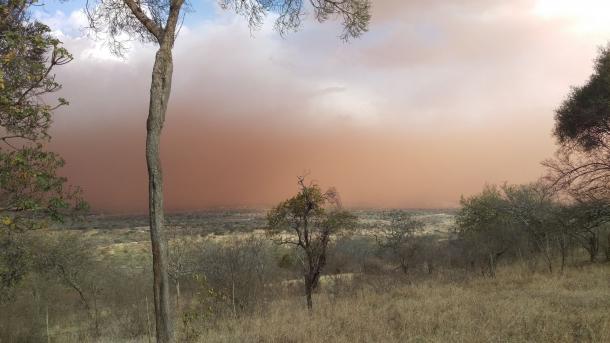The global average of annual mean dust surface concentrations in 2022 was slightly higher than that in 2021 due to increased emissions from west-central Africa, the Arabian Peninsula, the Iranian Plateau and north-western China.
In 2022, hotspots with significantly higher dust concentrations were identified in Central and South America, most of Central Africa, Spain, the Red Sea, the Arabian Peninsula, the Arabian Sea, the Iranian Plateau, the Bay of Bengal, South Asia, the Tarim Basin in north-west China and the tropical Atlantic Ocean between West Africa and the Caribbean.
Every year, around 2,000 million tons of dust enters the atmosphere, darkening skies and harming air quality in regions that can be thousands of kilometers away, and affecting economies, ecosystems, weather and climate. Much of this is a natural process, but a large part of it is the result of poor water and land management.
Spatially, the estimated peak annual mean dust surface concentration was in the Bodéle (Chad, in Africa), according to the Airborne Dust Bulletin 2022.
Monitoring and forecasting accuracy has improved in recent years due to the progress of numerical models and observation systems.
The WMO Sand and Dust Storm Warning Advisory and Assessment System (SDS-WAS), set up in 2007, strives to improve warnings through dedicated regional centers and combines research and operational work which is now being embedded in the international Early Warnings for All initiative.
“WMO is committed to tackling this major hazard. Sand and dust storms have impacts on health, on transport including aviation, ground transportation, road and railroad transportation and agriculture. This affects public health and safety and economies,” says WMO Secretary-General Prof. Petteri Taalas.
“The Early Warnings for All initiative contains an ambition to improve standard dust storm forecasting skills and warning services. We very promoting multi-hazard early warning service concepts to bring all hazards under one umbrella. And we also promoting impact-based forecasting which lies at the heart of improved warnings for sand and dust storms,” he says.
But more needs to be done, especially in the face of continuing environmental degradation and current and future climate change.
“The reports from the Intergovernmental Panel on Climate Change and WMO’s State of the Climate reports show show that human activities are having an impact on sand and dust storms. For example higher temperatures, drought and higher evaporation lead to lower soil moisture. Combined with poor land management, this is conducive to more sand and dust storms,” says Prof. Taalas.
pll/mem/lpn










